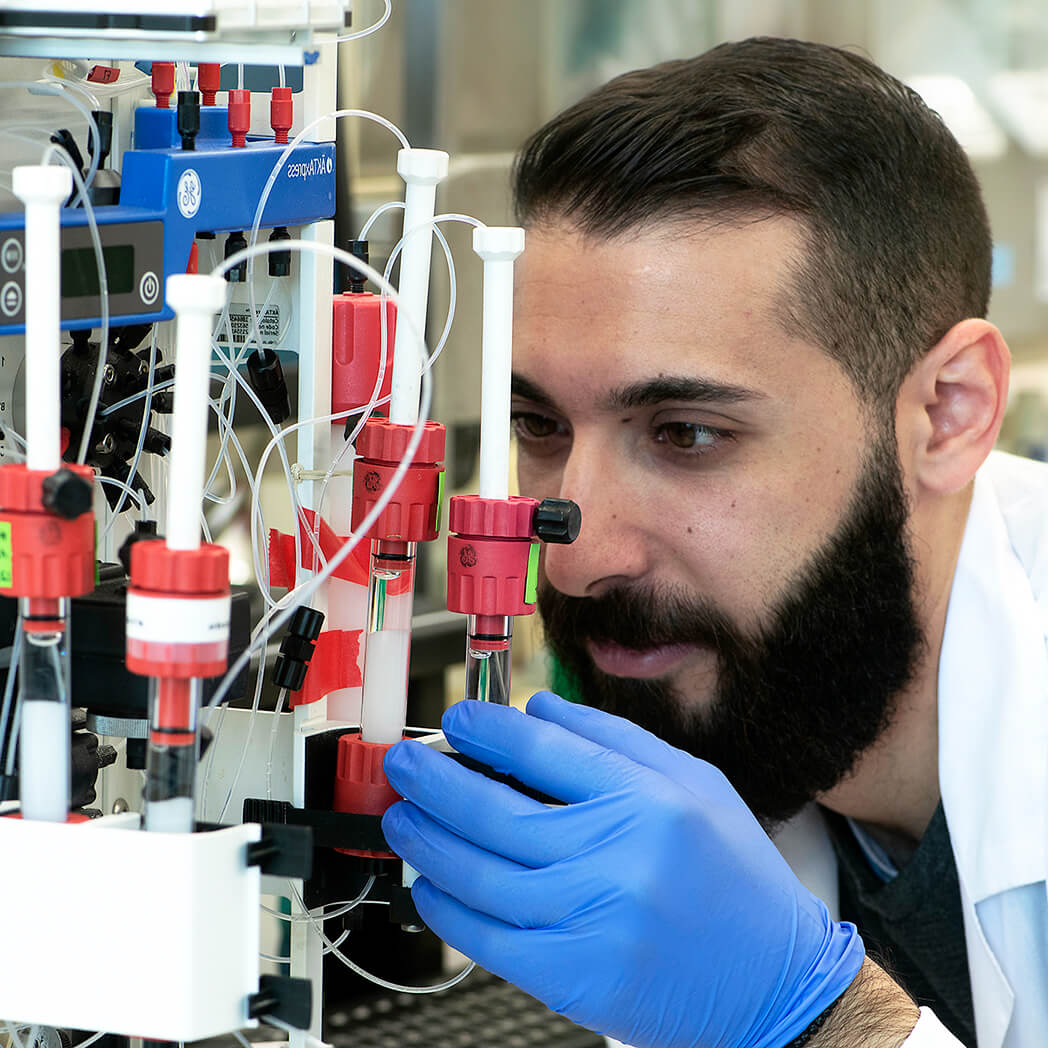Overview
Cat #:
Size:
10 mg
Lot:
L230SM0110
Alternative Name Ativan®, Temesta, O-Chloroxazepam, O-Chlorooxazepam, Almazine
Lyophilized Powder yes
Source Synthetic
MW: 321.16
Purity: >99%.
Effective concentration 1 nM – 10 µM.
Chemical name 7-chloro-5-(2-chlorophenyl)-3-hydroxy-1,3-dihydro-1,4-benzodiazepin-2-one.
Molecular formula C15H10Cl2N2O2.
CAS No.: 846-49-1
PubChem CID 3958
Activity Lorazepam is a positive allosteric modulator of GABA(A) receptors at the benzodiazepine site. It potentiates GABA-induced chloride currents at sub-micromolar concentrations1. It displaces [3H]Flunitrazepam from GABA(A) receptors in rat cerebral cortex (IC50 = 4.8 nM)2.
References-Activity
- Sanna, E. et al. (2003) J. Neurosci. 23, 11711.
- Möhler, H. et al. (1980) Proc. Natl. Acad. Sci. U. S. A. 77, 1666.
Shipping and storage Shipped at room temperature. Product as supplied can be stored intact at room temperature for several weeks. For longer periods, it should be stored at -20°C. Keep tightly sealed.
Solubility Up to 100 mM in DMSO, up to 40 mM in ethanol. Centrifuge all products before reconstitution (10000 x g 5 min).
Storage of solutions Up to four weeks at 4°C or three months at -20°C. It is recommended to aliquot reconstituted product for storage.
Our bioassay
 Alomone Labs Lorazepam inhibits specific binding of Flunitrazepam to rat brain GABA(A) receptors.Percent inhibition of specific binding of 1 nM [3H]Flunitrazepam to membranes from whole rat brain (except cerebellum) was plotted against increasing concentrations of Lorazepam (#L-230). Full inhibition is achieved at over 1 µM.
Alomone Labs Lorazepam inhibits specific binding of Flunitrazepam to rat brain GABA(A) receptors.Percent inhibition of specific binding of 1 nM [3H]Flunitrazepam to membranes from whole rat brain (except cerebellum) was plotted against increasing concentrations of Lorazepam (#L-230). Full inhibition is achieved at over 1 µM.
Target GABA(A) receptors
Lyophilized Powder
For research purposes only, not for human use
Last Update: 30/03/2021
Specifications
Citations
Citations

